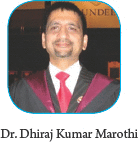Abstract
Introduction:
Management of infected total knee arthroplasty (TKA) is a challenge to patient and surgeon alike. Two-stage exchange is the universally acclaimed method to tackle this problem. Various spacer devices are available for the first stage surgery for local delivery of antibiotics. Here, we report our experience with management of infected TKA patients with our indigenously designed and produced knee spacer.
Case Report:
Between 2012 and 2013, 28 patients with infected total knee replacement (TKR) have been managed by our indigenous knee spacer. Minimal spacer-related complications and a stable knee joint with range of motion up to 100° were noted in these patients. After a mean period of 6-8 weeks, the spacer was removed and definitive TKR fixation done. At a mean follow-up of 4-months post second stage definitive surgery, patients were infection free with no evidence of recurrence of infection.
Conclusion:
Our new innovative customized articulating knee spacer, which has intramedullary stem extension, has potential to significantly reduce spacer-related complications along with providing improved knee function.
Keywords: Infected total knee replacement, knee spacer, bone cement
What to Learn from this Article?
Antibiotic knee spacers are an important tool in the armamentarium of an arthroplasty surgeon. Indigenous knee spacers as designed by us are more stable and give better functional results with minimal spacer-related complications as compared to readymade articulating spacers available in the market.
Introduction
With the increasing incidence of total knee arthroplasty (TKA), the incidence of infected TKA is also on the rise. The infection rate after primary TKA ranges from 0.5% to 2% and is a serious problem despite modern technology and rigorous prophylaxis. However, considering the increasing number of patients with TKA, infection is still a complication of major concern [1]. A variety of techniques and devices have been developed to improve the management of the infected TKA. Antibiotic-loaded bone cement spacers in the two-stage reimplantation technique are the gold standard as they allow early joint and patient mobilization, a shorter hospital stay and potentially a reduced rate of reinfection. Many off the shelf readymade spacers are available, but these are not very cost-effective and are associated with a variety of spacer-related complications. We describe our experience of managing infected total knee replacement (TKR) patients with our indigenous customized knee spacer in the initial stage of two-stage reimplantation complications.
Case Report
In the year 2012-2013, 28 patients of infected TKR were managed by our new innovated customized articulating cement spacer in the first stage of two-stage exchange arthroplasty. 13 of the 28 patients were females. The average age of the patients was 70 years (range: 56-79 years). 20 were knees with advanced osteoarthritis, whereas the other 8 were post rheumatoid knees, all of these had been managed by primary TKR. After first stage implant removal and debridement and our indigenous spacer implantation, no evidence of spacer dislocation, mediolateral tilting, or spacer subluxation was noted while only 2 patients had spacer fracture.
Procedure after due consent and enrolment clinical profile of all the patients is taken. Features such as pain, warmth, redness, severe restriction of movement with or without frank discharging sinuses are noted. Neutrophilia persistently elevated erythrocyte sedimentation rate (ESR) and C-reactive protein (CRP) and radiographic loosening of implants are considered criteria of diagnosis of infected TKR. After epidural anesthesia in first stage surgery, total knee components are removed, cement and loose bodies being curetted out along with thorough cleaning of femoral and tibial canals with pulse lavage.
During surgery itself, indigenous knee spacer is prepared on a clean trolley with 20 g (two pacs) and 40 g (four pacs) of high viscosity gentamicin-loaded bone cement. Depending on preoperatively determined femoral or tibial canal size, 5 cc or 10 cc disposable syringes are selected. These are filled with high viscosity gentamicin bone cement which is allowed to cure. Syringes are slit to retrieve the cement stems. After thorough debridement and lavage, these stems are inserted in the femoral and tibial canals with 1 cm of their ends projecting into the joint. Cement in doughy form is layered on femoral and tibial side to make femoral and tibial spacer components. For spacer construction 40 g (four packets) of gentamicin-loaded polymethylmethacrylate (PMMA), high viscosity cement is used, two each for the femur and tibia. Cement prepared for femoral side is layered on the femoral surface and the projected stem to shape it like femoral condyles of desired thickness. A groove on the anterior surface of the spacer is made with the femoral component for better alignment of the patella. For tibial tray, cement is placed on tibial surface in a doughy state and shaped into a spacer of desired thickness as determined preoperatively (Fig. 1). Flexion-extension matching is done to confirm an optimum spacer thickness and provide a smooth knee range of motion. No thumb test is used for assessment of patellar tracking (Fig. 2) physiotherapy is started by knee range of motion and quadriceps strengthening exercises as soon as the pain permits and walker ambulation by second post-operative day. Patients are discharged by 2 weeks and followed up regularly. By 4 weeks patients are weaned off the walking aids (Fig. 3). Post-operative antibiotics are started as per culture, and sensitivity report of the fluid and tissue sent for culture preoperatively and continued for 6 weeks followed by 2 weeks antibiotic free period. Normal skin condition over the operative site without any redness or sinuses and normal range of serial ESR and CRP markers make the patient eligible for the second stage of surgery which involves spacer removal and definitive TKR implant fixation. In our series, no evidence of dislocation, mediolateral tilting, or knee subluxation was noted except for two patients who had spacer fracture and were operated by spacer reimplantation. The mean range of knee motion with spacer in our series has been 100° flexion with complete eradication of infection and definitive surgery 6-8 weeks after spacer implantation. The cost of manufacturing these on table spacers is nominal when compared to off the shelf available articulating spacers, thus providing economic advantage to the patient (Table 1).
Figure 1.

(a) Infected total knee replacement, exposure and component removal, (b) intramedullary femoral and tibial stems, (c) our innovative knee spacer (in situ).
Figure 2.

Post-operative X-rays of the patient with knee spacer (in situ).
Figure 3.

(a and b) Post-operative knee function and ambulation.
Table 1.
Cost comparison between commercially available spacers and our spacer.
| Off the shelf articulating spacer | Our spacer |
|---|---|
| 80000/- | 5000/- |
Discussion
Two-stage exchange arthroplasty with an antibiotic-impregnated cement spacer remains the standard treatment for patients with an infected TKA [2]. Spacers not only help in maintaining knee joint space but also act as a source of local antibiotic delivery. Various types of spacers are available to handle the problem of knee infection. Nonarticulating block spacers can be easily made peroperatively by antibiotic-impregnated PMMA and are fashioned to fit the existing bone defect. Although useful in infected knees with the substantial bone loss, they present several disadvantages such as knee immobility and subsequent stiffness, spacer dislodgement, and bone erosion. Scar formation, tissue adherence, and quadriceps shortening make subsequent surgery a difficult one [3]. Temporary prosthesis, prefabricated articulating spacers, and on table articulating spacers are some of the various options used to overcome problems faced with static block spacers.
Use of temporary prosthesis technique involves autoclaving removed femoral component and using a new tibial poly and fixing both these components with antibiotic cement to the parent bone, medullary canals being packed with antibiotic laden beads. However, there is possibility of bacterial adhesion to the surface of these components [4] and increased the cost of management of patients with infected TKA [5].
Commercially available prefabricated cemented articulating spacers have various disadvantages in the form of size mismatch, lack of modularity, unsatisfactory antibiotic impregnation, fixed antibiotic type, and dose, often allowing delivery of a single antibiotic.
All these spacers have had their set of spacer-related complications which are largely due to their nonconformity to articulating surfaces, inadequate size and thickness and no or poor fixation to underlying bone. Spacer fixation to bone and its stability in the joint is largely compromised because of lack of intramedullary purchase in femur and tibia. This problem has been successfully addressed by our innovation where we have used intramedullary antibiotic bone cement stems along with on table custom made spacers. Stems not only provide sound anchorage to the overlying spacers but also act as a channel to deliver antibiotics deep inside the intramedullary canals.
Other factors like range of motion, patient satisfaction, and infection healing have been comparable to readymade contemporary devices available, but the cost-effectiveness of our spacers is an advantage to the patient. Commercially available articulating knee spacers are very costly and most of the times out of reach of the patient already burdened by challenges of infection, multiple surgeries, and loss of livelihood. We have been able to achieve eradication of infection in all our patients of infected TKR with our indigenous cost-effective device.
Spacer removal before second stage surgery was easy and no difficulties were encountered. Ours is a dynamic spacer, hence with knee flexion femoral component is removed first followed by tibial spacer removal. Moreover, cement spacer is made in later setting stage of cement while stems are inserted in medullary canal only after cement has cured completely; hence, there is no incorporation of cement in bone, making spacer removal into quite easy.
Our innovation provides specific advantage in the form of spacer stability inside the knee and capability of intramedullary local antibiotic delivery. However, a multicenter study and a long-term follow-up is required to confirm potential usefulness of this spacer device.
Conclusion
The articulating antibiotic knee spacer as designed by us for the management of infected TKR is cost-effective, customized, easy to manufacture on the operation table and is associated with negligible spacer-related complications. Its intramedullary stem component provides stability and deep delivery of antibiotics.
Clinical Message.
Our innovative knee spacer as a management option in the first stage of a two-stage exchange for infected TKR is easy to make on table in a customized fashion. Moreover, it is biomechanically more stable and associated with negligible spacer-related complications. This spacer device can give a better outcome in patients with infected knee arthroplasty as compared to conventionally available spacers.
Biography






Footnotes
Conflict of Interest: Nil
Source of Support: None
References
- 1.Resig S, Saleh KJ, Bershadsky B. The outcome of perioperative wound infection after total hip and knee arthroplasty. Int Orthop. 2002;26(4):257. doi: 10.1007/s00264-002-0357-1. [DOI] [PMC free article] [PubMed] [Google Scholar]
- 2.Kuechle DK, Landon GC, Musher DM, Noble PC. Elution of vancomycin, daptomycin, and amikacin from acrylic bone cement. Clin Orthop Relat Res. 1991;264:302–308. [PubMed] [Google Scholar]
- 3.Pitto RP, Spika IA. Antibiotic-loaded bone cement spacers in two-stage management of infected total knee arthroplasty. Int Orthop. 2004;28(3):129–133. doi: 10.1007/s00264-004-0545-2. [DOI] [PMC free article] [PubMed] [Google Scholar]
- 4.Goldman RT, Scuderi GR, Insall JN. 2-stage reimplantation for infected total knee replacement. Clin Orthop Relat Res. 1996;331:118–124. doi: 10.1097/00003086-199610000-00016. [DOI] [PubMed] [Google Scholar]
- 5.Hebert CK, Williams RE, Levy RS, Barrack RL. Cost of treating an infected total knee replacement. Clin Orthop Relat Res. 1996;331:140–145. doi: 10.1097/00003086-199610000-00019. [DOI] [PubMed] [Google Scholar]


